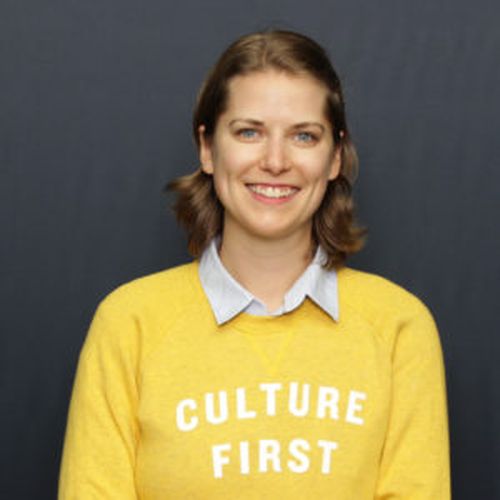
How to run a hackathon that nurtures collaboration
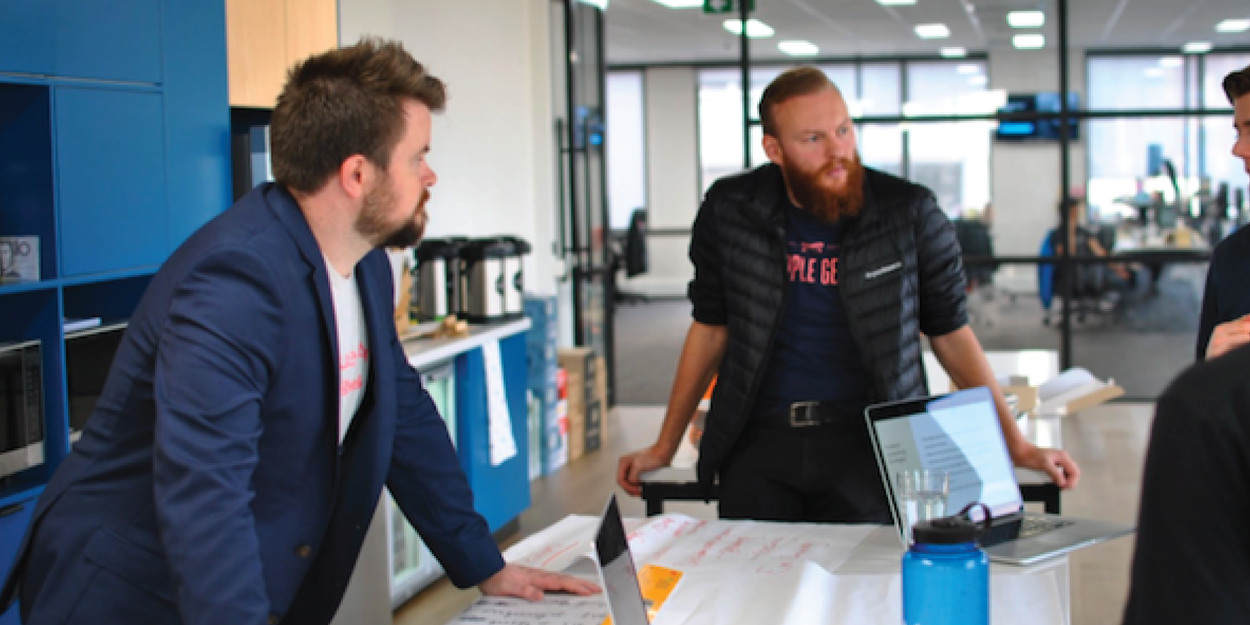
Lots of tech companies run hackathons, but we (Ginny Fry, Experience Manager, and Chris Barrell, Customer Success Coach) had never experienced one firsthand. We knew we wanted a unique approach to our hackathon so we set out to make one that aligned with our company values.
To help you put on your best internal Hackathon, we’ve put together this hackathon guide based on what we learned.
Why host an internal hackathon?
In the past, the Melbourne office held project days and dev days (for developers) where the loose brief was "do something cool and useful." However, as our headcount numbers climbed in the Melbourne office, the time and priority allocated to these days gradually dwindled.
Couple this with our engagement survey results pointing us to a focus on innovation, it was time for a new approach to these un-business-as-usual days.
There are three reasons the hackathon was our solution:
- We wanted to encourage innovation while acknowledging that innovation is a much larger problem than one hackathon can solve
- We wanted to give people adequate time to tackle challenging problems
- We wanted to help build relationships across teams in the Melbourne office
Guide to planning and running your hackathon
1) Find the right hackathon structure
Our hackathon planning team - the “Hack Team” - had six members, but we struggled without an active leader. For at least two months we had regular meetings making little to no progress.
Our advice: Find an executive or senior sponsor.
Our senior sponsor, Peter Haasz, VP Product Marketing and Strategy, turned the tide by hosting a pre-mortem session. We explored the various ways the hackathon could be a disaster. Two hundred sticky notes later we identified three workstreams (comms, ideas & logistics, and ownership), three leaders (Chris, Jo, and Monique), and the confidence to take this through to completion.
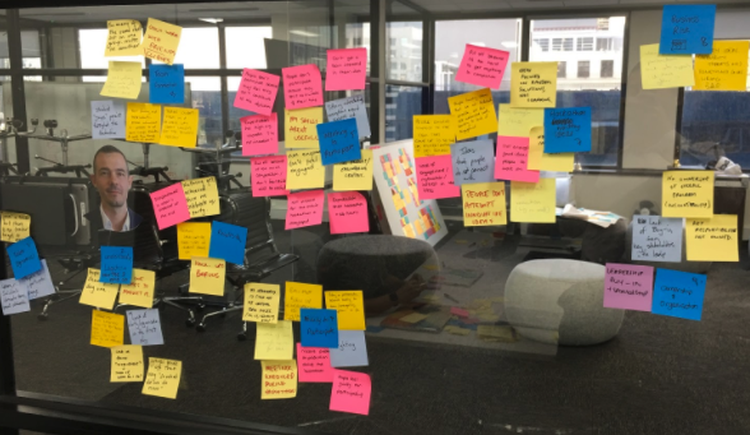
We decided that the Melbourne Hackathon would be a three-day event, running from a Pitch Morning on Wednesday to a demonstration marketplace on Friday.
2) Prep for pitches
We wanted the ideas generated at the Melbourne Hackathon to have a positive impact on Culture Amp. We also emphasized the role that people in technical and non-technical roles could play - cross-team collaboration was key.
To ensure that we generated good ideas and tackled worthy challenges, we provided the following questions in a template format:
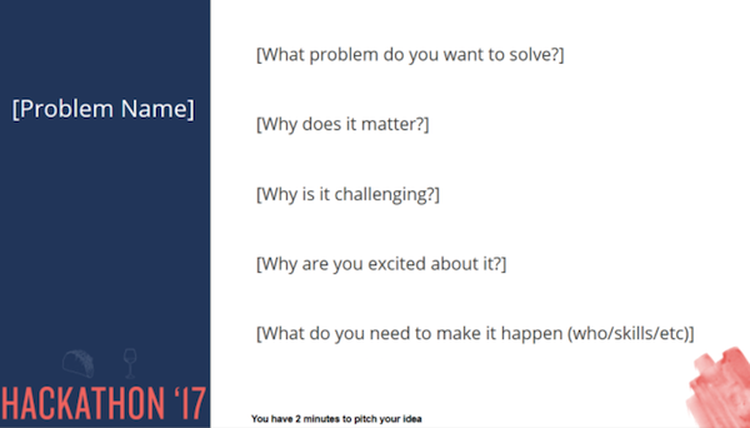
Using this framework ensured that people didn’t use the Melbourne Hackathon to practice a new skill, do something unrelated to Culture Amp, or some technical work already planned. We wanted to make sure Campers were prepared to pitch their ideas on day one. This templated format also made it easier for people to compare teams when it came time to pick who to work with.
2) Choose teams and designate coaches
Team formation was an important moment in making the Melbourne Hackathon feel inclusive. We ended up with twelve individuals who pitched their ideas for two minutes each. Campers had an opportunity to talk to the teams and select one that aligned with their interests.
We had a simple guideline for team formation: Teams need to have at least two Campers, ideally no more than eight
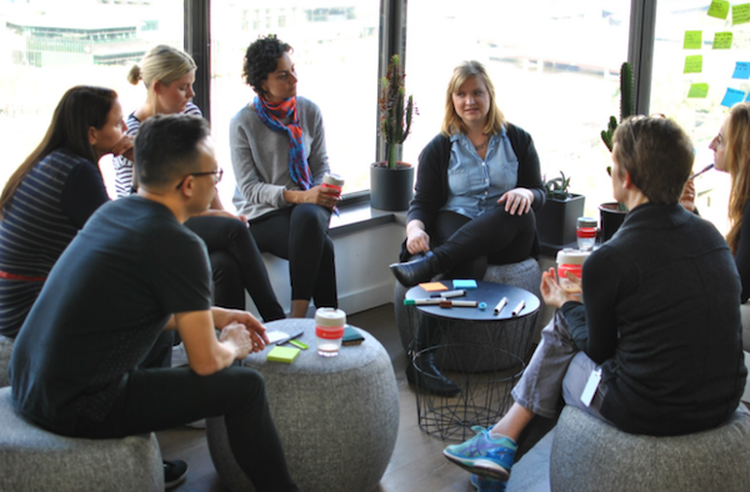
We wanted to ensure that all teams had the people they needed for a proper crack at a solution. Our first day was all about teams forming, brainstorming how to tackle their ideas and becoming aware of what each team member could bring to the project.
We also chose two members from our leadership team – Co-Founder and VP of Product, Rod Hamilton, and Customer Group Chief of Staff, Katy Stevens – to serve as Hack Coaches over the three days. Their purpose was to ensure participants had a positive experience and felt involved. They roamed the office providing guidance and acting as a sounding board for all teams and helped ensure teams got off to the right start.
3) Narrow the scope of problems & create a prototype to showcase
A company breakfast on Thursday morning fuelled everyone for day two. The day’s focus was for teams to narrow down the scope of their problems, propose solutions and begin to create a prototype they could complete by mid-Friday.
Something that impressed us immensely was the extent teams went to the effort of asking for feedback from members of our Customer Group. They pitched their ideas to people like Lou Pardi, from Marketing, or Ramon Elzinga, from Sales, and were able to use this feedback to improve their pitch.
Throughout the day our Hack Coaches checked in on teams asking probing and provocative questions. We found this to be one of the most valuable components of our hackathon.
4) Hold the hackathon showcase
On Friday morning the printer started working overtime! Banners were assembled and sticky notes were used to reserve spaces in the office for the marketplace. The buzz was incredibly exciting.
The marketplace kicked off at 3:00 pm with the award presentations at 5:00 pm. The entire office was used as the marketplace. Some teams chose to set up on tables in public areas, others in meeting rooms.
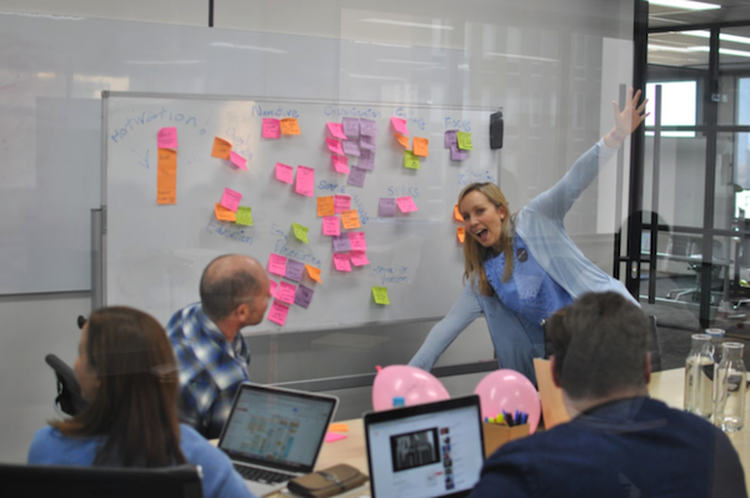
The idea was that everyone had an opportunity to get an understanding of what the teams had been creating over the past three days. Taking a different approach the judging panel allocated a time for each group to visit their stand for 10 minutes to hear their pitch and ask questions.
A Culture First Hackathon
Our values play an important role at Culture Amp, so it was imperative that the Melbourne Hackathon aligned with our values.
We created four awards to focus on specific behaviors we wanted to encourage with judging criteria for each:
The Enso Award: The team with the most demonstrated diverse cross-team and cross-functional collaboration
- How do they demonstrate the diverse experience on their team?
Who worked on the different components of the idea?
The Culture First Award: The team project that most clearly aligned with, or amplifies the Culture Amp values
- Who did you talk to for feedback? (internal, customers, those not involved in hackathon)
- Who started out of their comfort zone? How aware and willing is the group to share the gaps/unknowns in the solution?
- How does the team make decisions?
The Business Impact Award: The team project that showed the greatest potential to have a significant business impact
- How well did they demonstrate the potential business impact?
- How feasible is this to execute? How much will it cost and what is it going to take to make this real?
- To what extent have they validated the idea?
Popular Choice Award: Everyone attending the marketplace was able to vote for the idea that excited them the most.
Three voting chips were given to each person and people could distribute the chips in any manner – three chips for one idea because you really liked the idea or a chip in three different buckets. You could vote for your own team if you felt it was the right decision.
The judging panel provided another opportunity to put our values first and involve the community. We decided to split up the three-panel seats into a founder seat, a Camper seat, and someone from our community. Rod Hamilton represented the founders, Katy Stevens represented the Campers in Melbourne, and Nick Crocker from Blackbird Ventures, one of our investors, represented our community.
The business impact of the hackathon
The Melbourne Hackathon was a resounding success. It defied everyone’s expectations – even the Hack Team’s. We didn’t think we’d have as many teams as we did, let alone the caliber of ideas we had.
Our CEO Didier Elzinga recently shared his perspective on the Melbourne Hackathon at the Sunrise Conference. He said:
The thing that’s probably made me the happiest in a long while, is the three-day hackathon we did last week. It was phenomenal the way it worked, the way the teams worked. And I did nothing. It was not my idea, I wasn’t involved but I would have loved to be… I was blown away by what they were able to do.
Didier Elzinga
CEO of Culture Amp
After the Hackathon, the next priority was to maximize the impact of the ideas generated. Just because the three days were over, didn’t mean it should stop being beneficial. We have continued work on projects that will have a positive business impact with the help of our Growth teams.
Teams have been connecting with the relevant product managers within Culture Amp to talk about the business case and problem it solves, ensuring that the learnings of these teams aren’t lost.
For example, one team’s goal was to develop an overall Product Graduate Program to identify and nurture talent in a culture first way. Quickly realising that the problem was bigger than they thought, they narrowed the scope to a Junior Engineering Program as their MVP. A few months later, Culture Amp’s Junior Engineering program has launched!
What we learned: A hackathon retrospective
In the Melbourne Hackathon follow-up survey, we received great feedback. 90% of the 40 Campers who answered the survey thought that the Melbourne Hackathon achieved its objective and was aligned with our values and said they would love to participate again.
Gathering this feedback is incredibly useful to understand how the event was received by others, and to plan the next hackathon.
See below for the most positive questions from the survey. Personal learning and cross-team connection both came through as top benefits.
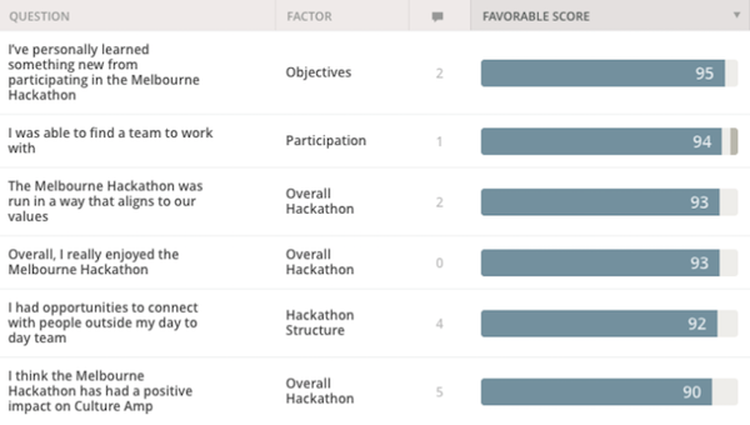
Below are the five lowest scoring questions, which demonstrates that we have some work to do for following hackathons, mainly focusing on the structure of three days. There are many more neutral responses from who did not agree or disagree with the statement than there are unfavorable responses (dark grey).
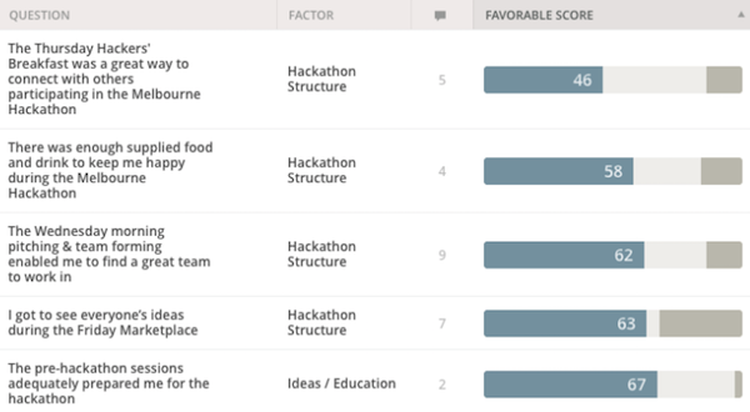
If you are able to survey participants after your hackathon event, the feedback is invaluable for making the next event better than the last.
Planning for the next Hackathon
We’re currently considering what the next hackathon at Culture Amp will look like. The intention of the Melbourne Hackathon was to conduct an experiment, which was successful.
A new project team has formed to investigate our next experiment: connecting all Campers (across our four global offices) through a hackathon.
During the Melbourne Hackathon, we were blown away by Campers’ energy and enthusiasm. The participation of almost the whole office, the prototypes, and ideas generated have set a high bar for the future of hackathons at Culture Amp. We’re all looking forward to realizing the potential of using hackathons to contribute to growing Culture Amp.


